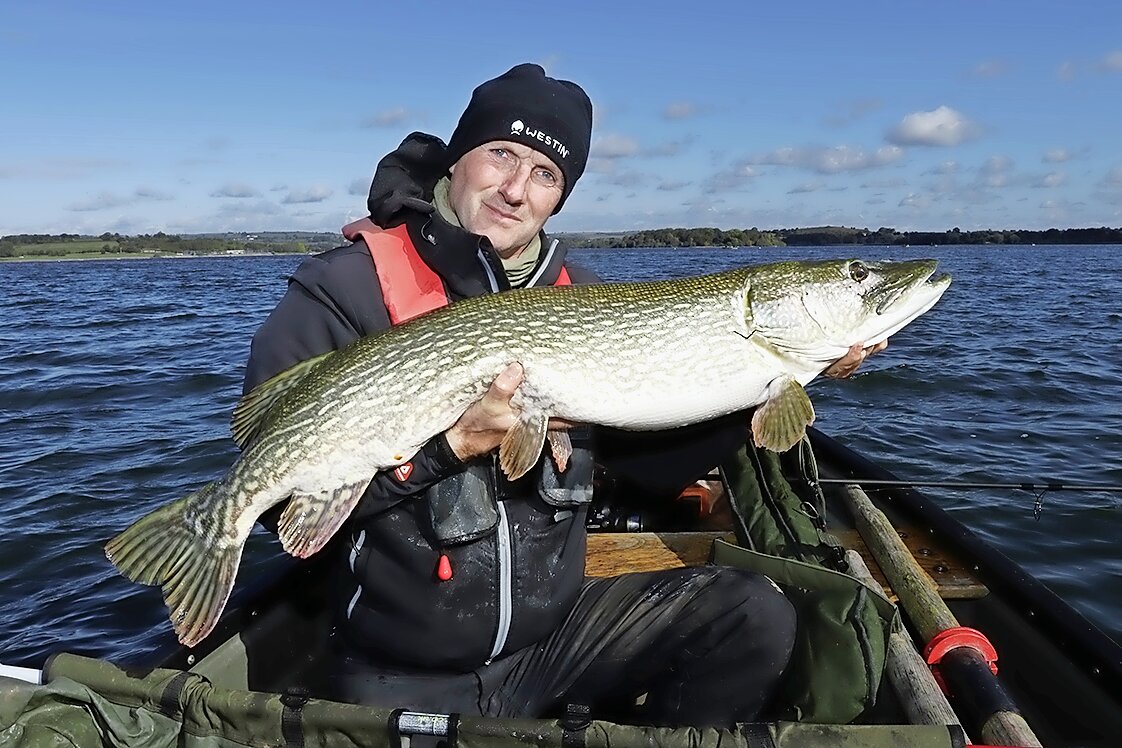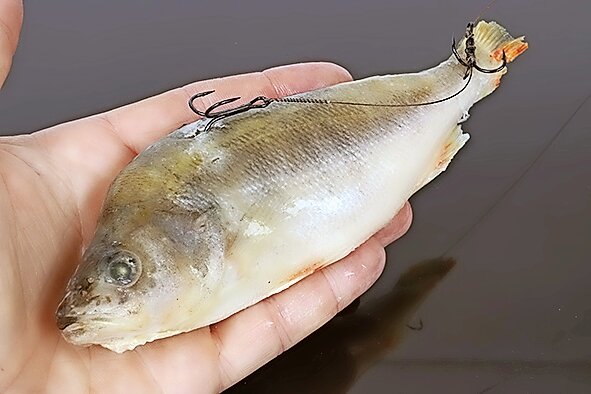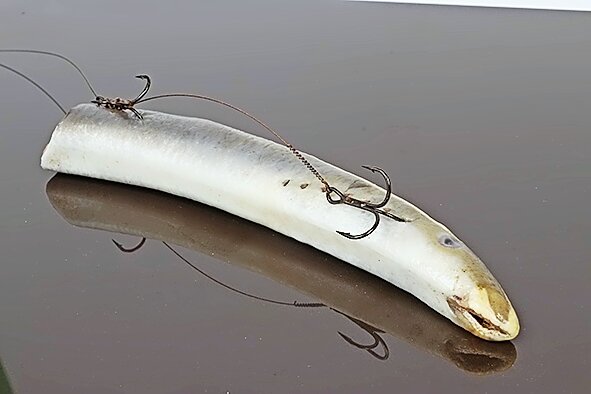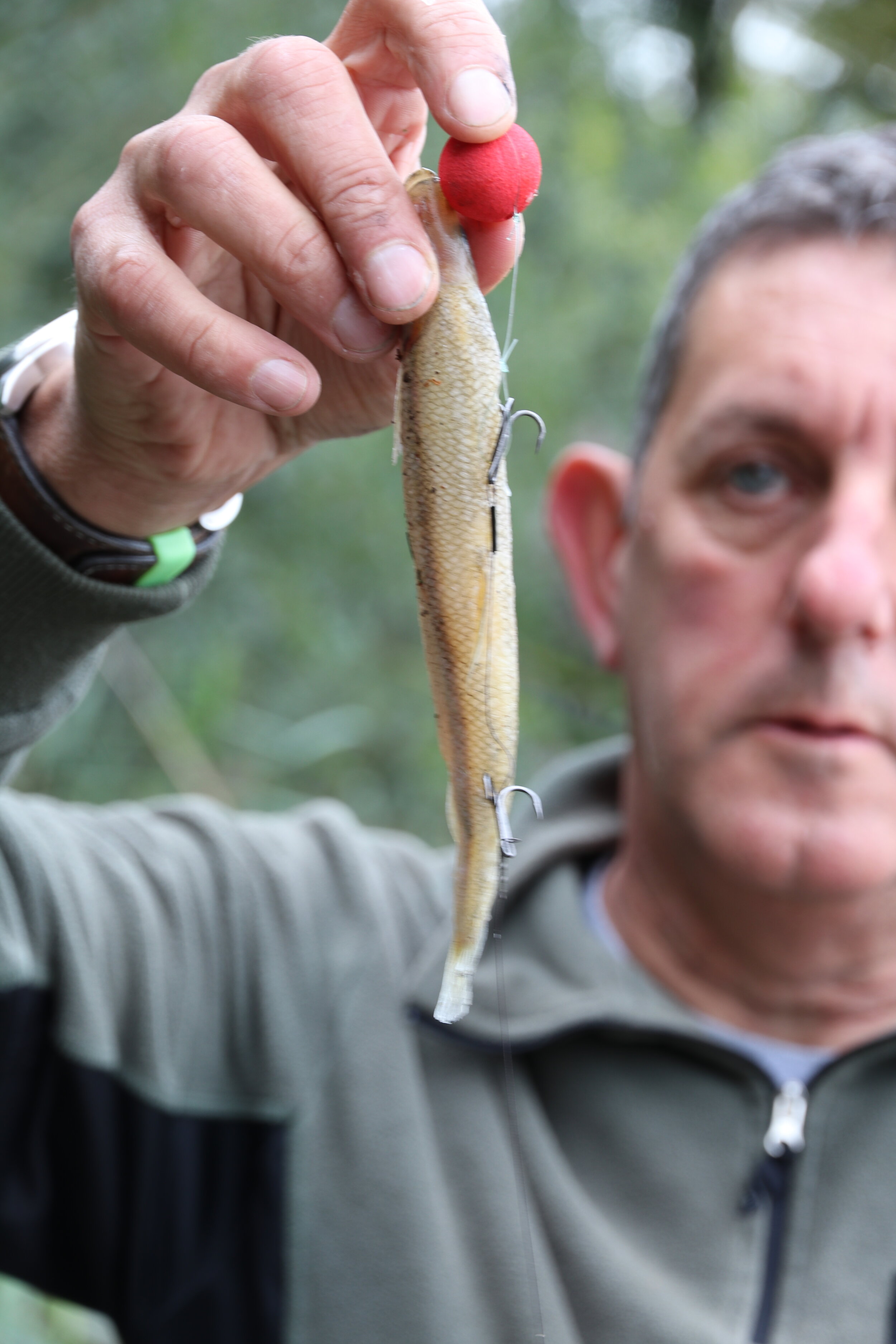Specimen Fishing Tips | How to catch 'picky' pike with Paul Garner
Do pike wise up to deadbaits?
My experience, backed up by some scientific evidence, is that they can, and avoid certain baits. If you are fishing a venue that sees a lot of pressure it can be worth trying unusual baits, or adding oils and dyes to alter their appearance.
There are often a couple of signs to look out for that I think might indicate cautious feeding. If you start getting dropped runs, or fish fall off during the fight, this can be a sign that they are not feeding confidently. Similarly, very gentle bites that only just move the float can also sometimes be from picky pike.
Fortunately, there are plenty of alternative baits to the ‘old faithfuls’ that you can try.
Bluey is a favourite of mine. These large baits are best used chopped in half and their soft, oily texture and bright blue colour make them ideal for pike.
Going natural with a roach, perch or skimmer bream deadbait is also a good idea.
I pick a bait that’s likely to be a big part of the pike’s natural diet, as they will be tuned in to feeding on these fish. Another trick to give you a completely different bait is to use a head section instead of the normal tail. This is particularly good with big mackerel and herrings. It looks different, and the head end also contains more blood, giving more attraction.
Pike fishing tips - Dai Gribble's top five deadbaits
Smelt
If I could use only one bait for pike it would be smelt. They are incredibly versatile and can be used with every method. They have an unusual smell that is a little like cucumber, but pike love them. Their pale colour makes for a very visible bait that’s ideal for drifting or popping up above weed. They are tough so can be cast long distances and used for wobbling and trolling.
Mackerel
Whether it be a small ‘Joey’ mackerel fished whole or half a larger mackerel, they make outstanding baits. I’m sure one of the main reasons for this is that they are very oily, which draws pike to them from a long way away, even in coloured water. Mackerel are quite dense and streamlined, making them the best choice if you need to cast a bait a long way.
Sardines
Like mackerel they are very oily and I reckon pike prefer them to any other sea bait. There is one major drawback – they are extremely soft. This is not an issue when they are frozen but once they thaw out they are prone to flying off the hooks. However, at short range, by hooking sardines with the top hook in the gill plates they can withstand a much firmer cast.
Roach
Pike are used to eating roach as part of their natural diet. On occasions pike will show a marked preference for roach over sea baits and for this reason I usually start a session with one rod baited with a roach. Often roach deadbaits have the swim bladder intact, making them perfect for popping up – just add shot to the trace to set how far up they will sit.
Lamprey
On some waters lampreys outfish every other bait, and on others they rarely produce a run. No other deadbait comes close to them in terms of the amount of blood they exude, and I like to slit the gills with a sharp knife to maximise the amount of blood leaking out. It is worth doing this every cast as it is amazing how much pike-attracting blood there is in a relatively small bait, even when it has been in the water for hours.







